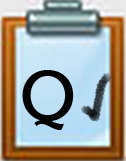Introduction
In this Quest, you will review the skills needed to connect and engage with learners from a variety of different backgrounds and cultures. You will take a fun quiz to find out how open you are to working with people from different backgrounds and reflect on how you would handle cultural differences when you experience them.
Effective collaboration requires respect for your collaborators. Everyone brings something different to the conversation. Point of view, cultural differences, opinions, and teamwork skills can all affect collaborations. In this Quest, you will have a chance to experience the different cultural perspectives someone might bring to a conversation in a work setting. You will also find out how non-verbal communication impacts conversations since different cultures interpret gestures and body language to mean different things.
I Can Statements
-
give examples of how cultural differences can impact a global collaboration opportunity
-
explain why understanding and respecting non-verbal communication and cultural differences is important when doing a global collaboration
-
explain how non-verbal communication can have an impact on communication
Key Vocabulary
Cultural empathy: Having an appreciation and consideration of the differences and similarities of another culture in comparison to one's own. People with cultural empathy are more tolerant and understand cultural differences.
Culture: The beliefs, attitudes, and values that a group of people share. This may affect their dress, their behavior in a given situation, their religious customs, and more.
Gesture: A deliberate body movement, especially of the hand or the head, that signifies meaning to the person observing the gesture.
Non-verbal communication: This refers to gestures, facial expressions, tone of voice, eye contact (or lack thereof), body language, posture, and other ways people can communicate without using language.
Play the Vocabulary Game below to practice the Key Vocabulary.
Vocabulary Game
You can change the Quiz mode to Match, Test, Learn, Flash Cards, Spell using the selection list at the bottom right of the activity that says "Choose a Study Mode." Direct Link
Steps:
Your teacher will ask you to participate in an activity that helps you understand the importance of non-verbal communication.
Before you begin the steps, Copy or download this
20.Q2 Collaborating with Other Cultures Notes Template
1. You will take a quick culture quiz from an organization that helps people collaborate globally.
- How much do you know about working with other cultures?
- Find out by taking this quiz, “Working Globally Across Cultures.” You will share your thoughts about the quiz in a way your teacher directs, such as a group discussion or in a Padlet.
2. Review these non-verbal communication rules for doing business in Japan.
Options for viewing and access: Use the slide show embedded below, or this document Non-verbal communication rules for doing business in Japan.
3. With a partner, brainstorm three-five behaviors you would avoid in a Japanese business meeting. Your teacher will direct you to place your ideas on an index card (to post to a board or wall) or to use a technology resource such as Padlet, or an online word cloud tool to share your ideas with your classmates.
4. Return to the Japanese Business website you just reviewed. Take a look at the items in the section, “Business Communication in Japan.”
- Compare this to the suggestions for doing business in America.
- How would you describe Japanese business culture?
- How would you describe American business culture?
- How are they alike and different?
- Either individually or with a partner, create a digital artifact to explore these cultural differences. You can do this on your Quest 2 Notes Template, on paper, Padlet, or using an online Venn diagram creator such as the one in classtools.net/Venn/ Be sure to take a screenshot or share the web link if you use an online tool.
- What conclusions can you make about communicating and doing business globally?
Step 5 Guide to Business Cultures
5. Reviewing Global Cultures.
- Use this Guide to Business Cultures and choose ONE of them from the quiz you took.
- Your teacher may assign one or allow you to select a culture.
- Pay special attention to “Etiquette and Customs” and “Meetings” to find out how you would need to show respect for this culture in global collaboration.
- Fill out the Reviewing Global Cultures part of your Quest 2 Notes Template.
- Your teacher may ask you to:
- Work in partners or small groups
- Communicate your learning about this culture by sharing out key ideas with your classmates in some way, such as creating a digital poster, a hand-created poster, or a slide or two for a short slide show. You should highlight key ideas about business and communication in this culture.
Step 6 Why is cultural awareness important?
6. Consider what you have learned about cultural empathy, non-verbal communication, and preparing for cultural exchanges.
Your teacher will review the options for you to reflect on these questions, possibly with the class as a whole, in small groups, with partners in a pair and share, or on a discussion board or some combination of those activities:
Why is it important to be aware of the cultural preferences of a group when doing a global collaboration?
What might a good global collaborator do to prepare for cultural exchanges?
How can non-verbal communication have an impact on a conversation?
What skills and actions will we use as a result of these new understandings? In other words, what competencies will we demonstrate?
***Save the answers you develop to these questions to help you with a future Quest, where you will create a “Global Citizen in Action Guide” to demonstrate the competencies you have mastered as a global collaborator.
Completing this Quest
In order to successfully complete this Quest you will submit the following resources as your teacher directs:
-
Working Globally Across Cultures quiz; sharing in a Padlet or other means per teacher direction
-
Reflection on cultural empathy, non-verbal communication, and preparing for cultural exchanges (e.g. Digital poster, slide or slides, or hand-created poster sharing the meeting customs from other cultures)
Check off this Quest on the 21t4s roadmap
I am ready for the next Quest, Speaking Out about Global Issues
Additional Resources
Competencies & Standards
MITECS Michigan Integrated Technology Competencies for Students, and
1. Empowered Learner
a. Articulate and set personal learning goals, develop strategies leveraging technology to achieve them and reflect on the learning process itself to improve learning outcomes
2. Digital Citizen
a. Cultivate and manage their digital identity and reputation and are aware of the permanence of their actions in the digital world
b. Engage in positive, safe, legal and ethical behavior when using technology, including social interactions online or when using networked devices
c. Demonstrate an understanding of and respect for the rights and obligations of using and sharing intellectual property
3. Knowledge Constructor
d. Curate information from digital resources using a variety of tools and methods to create collections of artifacts that demonstrate meaningful connections or conclusions
6. Creative Communicator
b. Create original works or responsibly repurpose or remix digital resources into new creations
c. Communicate complex ideas clearly and effectively by creating or using a variety of digital objects such as visualizations, models or simulations
d. Publish or present content that customizes the message and medium for their intended audiences
7. Global Collaborator
c. Contribute constructively to project teams, assuming various roles and responsibilities to work effectively toward a common goal
d. Explore local and global issues and use collaborative technologies to work with others to investigate solutions
Websites and Documents
Websites
- Class Tools/Venn
- Comparing Management Cultures
- Creately
- Global Collaboration Survey
- Guide to Business Cultures
- Job Success - Listening Skills
- Non-verbal communication rules for doing business in Japan
- Padlet
- The Power of Body Language
- Word Clouds
- Working Globally Across Cultures Survey
21t4s Videos
21t4s Documents & Quizzes




